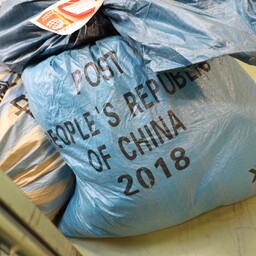The volume of goods arriving in Estonia from Chinese online stores has increased tenfold in recent years. This significant growth has become a major problem for the customs service. Last year, 4.6 billion shipments arrived in Europe, 98% of which came from China.
Ursula Riimaa, a representative of the Tax and Customs Board (MTA), says that since 2021, the growth of e-commerce has been explosive. For example, the volume of goods arriving in Estonia on one flight is equivalent to the volume of one month in the past. This significant growth increases the workload of customs substantially.
All shipments undergo initial risk analysis and are randomly inspected. Riimaa adds that not every shipment can be checked, but the customs service does everything to ensure that dangerous or prohibited goods do not enter Estonia.
Packages are increasingly ordered from China, and there are several reasons for this. One reason is US customs regulations, as well as changes in people's consumption habits. Convenient logistics corridors and simplified customs services in member states have also been established.
Riimaa also talks about paying taxes. Many goods are not declared correctly, and values are indicated incorrectly. This may cause confusion among buyers who think the price in the online store was different from that at the time of paying taxes.
The European Union has started implementing new measures to help with this problem. In 2021, a VAT exemption was introduced, which has already shown positive results. However, it is difficult to cope with the volumes of e-commerce.
The MTA representative adds that customs also has other tasks, such as sanctions controls. Last year, over 500,000 such checks were carried out. There are many challenges, but the customs service is trying to cope with them.

